My Teaching JourneyI have been sharing lots of tips and strategies for getting started with back to school lately. I think it is time to shift gears. This week I am going to share a bit about my teaching journey, what I've been doing lately, and how I have stayed motivated throughout the pandemic. I have wanted to be a teacher since I was five years old. I still remember teaching my stuffies, my pets, my siblings, and even the neighborhood kids. We would set up "school" in my basement and we would practice doing some of the things I was learning at school. I find this very interesting now as I look back because I was very shy when I was young. I remember finding it difficult to join in during activities and I was often found playing alone in the dollhouse during free time at kindergarten. I gradually began to make friends and participate more readily and as I grew older, I was able to widen my group of friends and join different groups. In high school I joined the future teachers club and started tutoring young children. When I first started teaching, communicating with parents was the most difficult thing for me. I had no problem being animated and teaching the kids, but speaking to adults still scared me. I had to learn to do this and become more comfortable with adults if I was to be able to effectively communicate during conferences and other interactions. It took work, but I learned to do so. I am now retired and I am able to strike up conversations with others, even people I don't know. My grandkids often say that whenever they go anywhere with me we meet someone I know. My daughter even asks me if I know a person after she sees me talking to someone. They find it hard to believe that I was shy and afraid to talk to adults because they see me interacting easily now. It goes to show that you can learn to do things that are uncomfortable when necessary. I would venture to guess that there are many other teachers who can identify with this. You can be an introvert and still be a good teacher. You are there to make a difference for the kids, and if you feel strongly about this, you will work through the uncomfortable things to make it happen. From music to primary classroomI began my teaching career teaching elementary music. My husband was an elementary music teacher, so it was a common interest for us. (We still teach several ukulele groups.) I ended up teaching French Immersion music at 2 schools. I continued with this for a few years, and finally had the opportunity to teach part time in a primary classroom teaching grade 1/2 and part time French Immersion music at one school. Although I enjoyed teaching the music, I loved teaching primary and finally moved full time into a grade 2/3 classroom. I continued to teach a noon hour ukulele group as well. Projects For KidsThroughout the years, I became passionate about finding ways for my students to share their learning in different ways. Projects became a regular part of my instruction. We would have at least one big project, if not two, to share with the school and families each year. It was amazing to see how the kids thrived with this approach. You can find out more about some of these projects here. Small group instruction and reading centersI also became fairly adept at creating and running centers for guided reading and math. I enjoyed being able to provide a wide variety of activities for the kids and I learned early in my career that it was important to work with small groups and differentiate because there was such a wide range of needs in the classroom and whole group instruction wasn't reaching everyone. When I had parent helpers, or educational assistants available, that was bonus, but often there was a shortage of extra help and I had to figure out how to still make it happen. You can find out some of the tips for doing this here. Student led conferencesStudent led conferences were a new thing back in the nineties. Not many teachers were willing to give them a try. I decided to do so, and I didn't look back. I found them empowering for the kids, and the parents seemed to find them beneficial. It was so good to see the positive interaction between the kids and their parents. If you want to learn more about student led conferences, check them out here. Keeping motivatedFast forward many years, and I am now retired. I was tired of the politics, but I still loved teaching, so I began volunteering at the school. I did reading and math groups until the pandemic hit and volunteers were no longer allowed into the school. I had also been tutoring in math, reading, and French. When they stopped allowing others into our homes, this had to stop as well. This was really tough for me because I wasn't ready to stop teaching. I needed to find a way to keep going. Luckily, I was able to stay connected to a couple of the teachers in the school and provide them with help and resources. This motivated me to continue sharing tips and strategies. I started to create resources to complement these strategies and I continued to communicate with my friends. I also took some courses that helped with my product creation and blogging. Final words and a tipNow that some of the restrictions have been lifted, I am hoping to be able to return to my volunteering in the fall. I miss being with the kids and seeing them light up when they understand something.
Well, there you have it. A brief history of my teaching journey and where I am now. Next time I will continue to share more tips and ideas with you. I wish you well as you continue to venture into a new year with a new normal. Before you go, here is a final tip. Remember to take what you learned throughout the pandemic and use it to enhance your future teaching. Don't dwell on what didn't work, focus on what good came out of it. If you look closely, you will find some positive things. Happy teaching!
0 Comments
What motivates you to keep going?What motivates you when you are stuck at home or in an unfamiliar or uncomfortable situation with work? I started thinking about this recently as I found myself running out of steam. It has been a year and a half since life changed because of the pandemic and some days it is hard to keep pushing on when it seems like things are not improving or changing fast enough. Life changing eventsLast year things changed in February for me, just a couple of weeks before the move to distance learning happened in Canada. My husband had a heart attack. All of a sudden, he was unable to do much more than go from the bed to the kitchen before being totally exhausted. He needed a walker just to get around the house. We were told that he basically had to cut sodium out of his diet (not easy for someone who likes spicy food) and he went on a regimen of medication. Talk about a change. The day before his heart attack he was preparing his equipment and getting ready to head off to be an official at a track meet down island. He was involved in many different activities. So was I. We had to put these on hold and focus on helping him recover. This was very difficult to do. We were so used to being busy and working with others. All of a sudden, we were at home every day doing just the basics (eat, sleep, eat, sleep, some computer time or tv time, eat, sleep.) We were gradually able to get outside and do some walking every day. Here we are a year and half later, and he is stronger, able to do most things that he used to do, and healthier than he has been in a long time, but it hasn't been without its challenges. One thing we joke about is that everyone stopped doing what they were doing so he wouldn't feel left out as he recovered. All kidding aside though, we have a greater appreciation for what is important in life, and also a realization that we need things to keep us motivated and able to keep going when it seems like nothing is changing. Family has been a big one for us. Even though we were not able to get together we were able to meet virtually and stay connected that way. A Creative OutletMy TeachersPayTeachers business is another thing that I can go to when I need to have a focus. I have been busy taking some workshops and courses so that I can better provide materials and resources for teachers and I have continued to learn new things. I also try to stay connected with teachers in my district as well as those I have met in my Facebook groups. This helps me to better understand how they are dealing with the issues out there right now. Together we are able to support each other as we get through this pandemic. Get inspiredIt is funny how we all react so differently to change. Some people embrace it as a challenge and forge ahead, others shrink back and begin to doubt their ability to go on, and others are somewhere in between. When we look back on this past year and a half, hopefully we will find that we surprised ourselves in a good way with how we were able to take the impossible situations and make them work, maybe not the way we thought, but I guess that is part of learning, and adjusting as we go along. Through all the ups and downs, try to find things that inspire you and continue to motivate you to carry on. Have a wonderful year.
Back To School FunUsing fun activities will make back to school more engaging and exciting for kids and they will probably participate more in the activities. The types of activities that you choose will depend on the age and composition of your class, but there are some that can be used in most situations. The key is to get kids participating and enjoying their time back at school. Getting To Know You ActivitiesGetting to Know You activities and ice breakers are great ways to get started. How many times have you been to workshops where you do activities like "Find Someone Who...." These activities are meant to get you moving around and interacting with others instead of staying with one or two familiar people. It may not always feel comfortable for some, but they may meet someone with common interests in the process. A fun twist to this might be to have the four corners of the room as meeting places and then ask questions that require the kids to choose one of the options and move to the appropriate corner. For example: Do you have brothers? Go to corner 1. Do you have sisters? Go to corner 2. Do you have brothers and sisters? Go to corner 3. Are you an only child? Go to corner 4. If you are interested in some ice breaker mixer cards, check out this freebie. Learning about your students' interests will help with planning and preparing activities that will engage them in their learning. Just like us, kids are more likely to want to do something if they are interested in the topic. I always started the year with different interest profiles or activities that helped me to find out more about my students. There are several kinds of activities available, but these are the ones that I used most often. This is Me booklet (this is part of my basic vocabulary activities booklet) My heart....my passions (likes and hobbies that are later used for writing prompts. It is part of my using five senses and details writing packet) Shield (this can be used for displaying talents) T-shirt (another form of all about me) Team building and classroom management activitiesAnother crucial piece of my start up was creating a great community. Team building is important if you want the kids to work together to have a successful year. They become each other's cheerleaders and they encourage each other when things get tough or when behaviors need to be improved. I did many different activities to make this happen, and I also incorporated classroom management techniques. One of the techniques I started using before retiring was Whole Brain Teaching. This worked well with my kids and I was amazed at how quickly they latched on to the strategies that I used. I didn't get to use it fully, but I was very happy with how the parts I used worked. If you want to learn more about this, you can check it out here. I also created some posters of the rules to use in my classroom. You can find out more here. Bucket filling activities and Acts of Kindness activities were also part of my lessons during those first weeks of school. These were instrumental in helping the kids to think about others instead of always focusing on themselves. Positive Self Esteem And Growth MindsetBy now, you probably know that developing positive self esteem is one of the most important things that I focus on with kids. Positive self esteem is so important when developing self confidence and a positive outlook on the world. It is our job as teachers to help kids see that they are valued and important and that they have much to contribute to the world around them. Having a positive attitude is key for this to happen. In recent years the focus has been on social emotional learning and developing growth mindsets. This has a direct impact of learning. Helping kids to see that they "can" do things and that they are moving forward encourages them to keep trying and they begin to experience more success and their self confidence grows. You can find several resources in my self esteem category and you can read more about optimism and pessimism activities here. Communication is keyCommunication is a key component for a successful year. This communication involves parents, students, and colleagues. All of these types of communication are necessary. Students need to know what is expected of them and they need to know they are accountable for their actions. They also need to know that there will be communication between you and the parents. This communication should be positive and should not be restricted to problems or concerns that have occurred. Successes should be communicated too. It is very exciting for a parent to hear what is going right with their child. Most parents are used to calls being for negative situations. A positive call can make their day too. Communicating with colleagues is helpful for many reasons. Collaborating on common units, getting familiar with concerns about other students that you may encounter when on duty or field trips, sharing of materials and other resources, and agreeing on some common rules and routines are some examples. Back To School FormsOne of the first things I did each year was send home a Getting Acquainted form. I remember being told once by my administrator that kids are precious and parents have entrusted them to us. What better way to acknowledge this than to ask for their input about their child. The Getting Acquainted form also provides valuable information from the parents' perspective which can be helpful during future communication. The other form that I send home is a Home Reading letter. Many parents want to be able to help with their child's learning, but aren't sure what to do. This letter provides different strategies to use when reading with your child. It also helps parents to see that this is something that should be positive for both the child and the parent rather than stressful and a struggle to do. Many teachers have sharing times or special helpers or stars in the primary grades. I used to assign certain days for sharing for small groups of children so that it was consistent and not to time consuming during the morning start-up. This routine also helped children to prepare ahead of time when they knew that their sharing day was coming. For the star or special helper, I changed the person each day. I know that some teachers keep the same person for the week or do some other variation of this, but for me, daily changes worked well. If someone was absent, it was easy to see who was next and make adjustments as needed. I created a set of start up forms for back to school that include star of the day, sharing day schedule, and some criteria forms and examples, as well as the Getting Acquainted note and the Home Reading letter. You can check it out here. First Week Of School ResourcesI have created several first week of school activities that can also be done virtually, if necessary. These activities are an easy startup to math and language skills after summer break. They can be done in any order, and you can select which ones to do. They are available individually, or as a bundle. This is only a sampling of what can be done the first week of school that will provide engagement for the kids and set you up for a successful year. Some Final TipsHere are a few final tips to think about. • Simple management things will help you keep your sanity. For example lining up routines, how to walk in hallways, rules for working in small groups, etc. • Focus on the positive, not the negative. It can be exhausting to constantly redirect those who choose to misbehave or distract others. When you focus on those doing what is expected, often it will encourage other to follow suit. • Everyday is a fresh start. This goes for students and for YOU. • Have fun with your students and share stories, anecdotes, etc. with them. Enjoy your time together. If you are looking for some activities and resources that are free and fun to use, sign up for my newsletter.
Returning To SchoolThe first week back at school can be different things for different kids. Some dread returning, some are scared, some are excited, some are nervous, and some don't really know what to feel. We need to be aware of all these different emotions and find ways to help each child feel comfortable and excited to learn. This won't be easy, and there may be some kids that take a while to adjust, but it is a goal that we should aim to achieve. If kids are eager to learn, it makes life easier for the teacher as well. It can be challenging to motivate and encourage kids if they don't seem to be interested and they resist participating. Tips To Make The First Week Back PositiveThere are many different things that you can do to help make the first week back positive and help the kids to engage in their learning. Here are a few suggestions. Use games and ice breakers to help kids to get to know each other and work together as a team. This may be uncomfortable for some of the kids, so be aware of this and try to relieve some of the anxiety or lack of comfort by pairing them with someone they know, or by being their partner or team mate. Make sure the activities are low pressure so that they can be fun, but not too stressful. If you have kids that were with you last year, give them roles of leadership and allow them to help guide the new kids through the rules and routines and be "the teacher" sometimes. Have them buddy up with some of the others who may be feeling nervous or anxious about joining in. Summer AdventuresI often had my students write about their summer holiday and all the adventures they had. But, as I learned that summer break is not always a happy time for some kids, and it is something that they may not feel comfortable sharing about in a written activity or an oral sharing time, I made some adjustments. I started to share some of my summer adventures with my classes and then do a quick written summary example with them. I then gave kids an option. If they wanted to, they could share their own summer adventure. If they found this difficult, they could write an imaginary story of summer adventures or they could write about another topic. The goal was to get them back to writing so I wanted them to have options that would work with their experiences. Team Building And Developing Positive Self EsteemGetting the class to become a team and learn to work together, is really important if you want to have them develop trust and respect for each other. There are many ways to do this, but I feel that the most important piece is creating positive self esteem and a caring attitude towards others. There are many activities that can be done to help make this happen. I often begin my year by teaching about Tigger and Eeyore and how they view the world. We look at the difference between optimism and pessimism and how that can affect our day. I created some optimist/ pessimist task cards that allow the kids to talk about different situations and how they can react positively or negatively in them. Once we have learned about optimism and pessimism, I talk to the kids about attitudes and how important they are. I use the phrase, "Attitudes are contagious. Is yours worth catching?" I like to have this posted in the classroom as a reminder when lots of complaining happens. Success Words, Bucket Filling, And MoreDeveloping self confidence and a belief in oneself is necessary if one is to feel successful and valued. There are several different things that can be done to help with this. Name acrostics, all about me activities, and talent shields are some examples. One of the activities I like to do is "success or power words". It is amazing how these words can become so powerful when they are a focus. Many of my students would find things that said "believe" and point them out to me when they learned that it was my power word. I even received a couple of gifts that had the word on them. You can find out more here. Bucket filling activities are also a great way to help kids to see how they cause others to feel based on their words or actions. I remember sharing stories with my class about different situations that happened to me. One time my daughter had her young children talk to me on the phone because they needed reminders to fill buckets instead of emptying them. They immediately changed their behaviors. (Was it the bucket filling reminder or was it wanting to please Grandma? Does it matter, it worked.) I like to tie in Acts of Kindness to bucket filling. They complement each other nicely. It is great to see the kids focusing on others instead of themselves, as well. Brain Breaks And MovementMake sure to include some brain breaks and movement activities during the day. Remember, if we get exhausted the first week back, kids do too. They have been away from school for a couple of months and they need to readjust to sitting and doing activities for several hours of the day. Each Day Is A Fresh StartKids need a reason to want to be at school and learn. If they have a cloud of negative behavior following them around, it is hard to feel motivated to try again or to improve. It is important to allow them to have a fresh start every day and to recognize the improvements in both attitude and behavior. We would want a fresh start and maybe even a do over, so it makes sense to provide this for our kids. This has been my policy for many years. I also find that if I don't look into the history of a child or get the low down from previous teachers immediately, unless it is related to a health or safety issue, or an IEP, I get to form my own opinion of the child and they have a chance to start with a clean slate. I learned how valuable this was a few years ago when I had a child with behavior issues that I was unaware of and after 3 weeks in my classroom, his mother commented that it was the longest he had ever been in a regular classroom. At this point, I did check into his history and I learned of some of the issues, but because we had already built up a relationship and he had not exhibited huge behavior issues, we were able to have a successful year. I did have to make some adjustments to different assignments and allow him to have some flexibility in his learning style, but it worked. Have Fun With Your StudentsHave fun with your students and let them into your world. It is important for them to make a connection with you. I find it interesting to see how they react to some of my personal stories about my family, my pets, and my adventures outside of school. They often have wonderful connections and they love sharing them with me. Years ago when I first started teaching, I was told not to relax and smile at first. It was thought that it would be easier to maintain control and manage the class this way. I learned that it was better to share a part of me and build the relationship immediately. Kids want to feel included, not managed. Enjoy being with your students and they will respond accordingly. I hope these tips have helped and that you will have a wonderful year. Next time I will share some resources and activities with you. In the meantime, if you are interested in getting some free resources, sign up for my newsletter.
Back To School Insights For The New YearBack to school time is approaching. For some of you, summer break is over and you are heading back to school. For others, you have another month to go. Of course, as teachers, many of you are already thinking about the new school year and some of the things you will be doing. I hope you have had time to rest and recharge and that you will have a renewed energy and motivation to get started again. After an exhausting and unprecedented year of teaching through a pandemic, it will be great to return to the classroom again and back to some of the familiar routines and activities. Here are some insights and suggestions that I hope will help you based on what I have learned throughout the years. Returning to school this fall will be a bit different since it is at the end of a very difficult year teaching during a pandemic. There will still be some uncertainty as to how things will progress. Will there be another wave, more online or hybrid teaching situations, or extra precautions needed in the physical classroom? Hopefully not, but we still need to be somewhat prepared. Take what you have learned from teaching virtually and use the good parts to enhance your in-person teaching. Have a plan for teaching using a mixture of in-person and online activities. That way, you can find a blend that works with the current situation. It may not be as overwhelming that way. Many teachers have decided that they will continue to use digital resources in the classroom to supplement their teaching this year. Preparing For Back To SchoolSetting up a special classroom environment for teaching is not necessary, but it will definitely make a difference to both the kids and you if it is inviting and well laid out. Just like people are attracted to different homes and designs when choosing a place to live, kids will have an emotional response to their classroom environment. I know it is not always easy to get into the room ahead of time and do decorating and arranging, but even small things like pops of color, desk groupings, messages on the board, and special centers will help create a positive atmosphere. Once school begins, the kids can perhaps help with adding special touches to the class decor. Getting Ready For The First DayEvery school and district has it own way of getting classes organized and ready for the new year. In our district, the classes are determined by the numbers of students enrolled and a class size formula. That means that the classes are not finalized until the end of the first week of school. Instead of forming classes and then restructuring them all after a few days of school, the standard process is to have students return to their classes from the previous year. New students are added to classes of similar ages/grades. After the numbers are finalized, new classes are formed and the whole school is shuffled on the same day. This process works, but it does require some extra planning when deciding on what activities to do, what the classroom set up will be, and how to make the new students feel welcome and included in a class that is already familiar with rules and routines. When the reconfiguration is done, some students will move to different classes and some will remain in the same classroom. It is important that they feel special if they are staying with you. I will elaborate more in the next blog post. School Rules and RoutinesIt is important to know what your must have rules are for the classroom and also which ones are flexible. During the first few days of school, if you are still not in the final class configurations, some of these rules can be introduced and practiced right away. Regardless of the different groupings, school rules can be introduced and practiced. There are different ways of doing this. One practice that we have used in the past, is to create family groupings of mixed ages and have them rotate throughout the day to different teachers for lessons on specific rules and expectations. That way, every student is getting the same instruction and information for each expectation. Another method is to have a school wide chart of expectations posted in each classroom and have the assigned teacher go over each of the expectations with his/her class. Or perhaps, buddy classes could combine to do these lessons. Remember Self CareIt is important to remember self care as you return to school. Get lots of rest and give yourself some slack. I remember how exhausting the first few weeks of school was. Even though you intellectually know it will be tiring, it still comes as a bit of a shock when it actually happens. Being well planned will help you to get through this. Brain breaks and physical movement will not only help your students as they adjust to being in school all day, it will give you a mental break and perhaps help you to get through the day better as well. Next time I will focus more on the first week of school and ways to start the year off positively. Related Posts |
About Me Charlene Sequeira
I am a wife, mother of 4, grandmother of 9, and a retired primary and music teacher. I love working with kids and continue to volunteer at school and teach ukulele. Categories
All
|






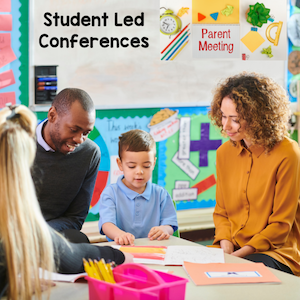








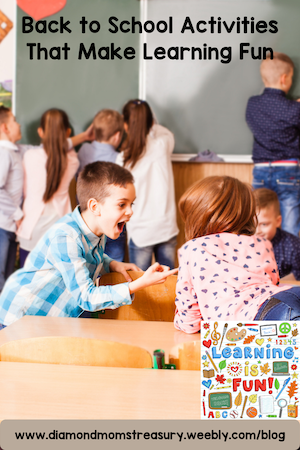
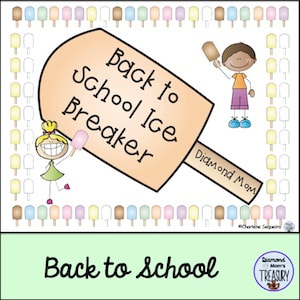





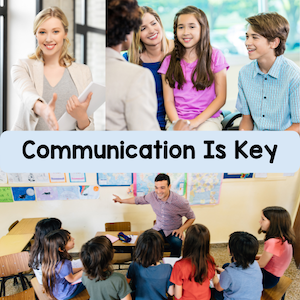

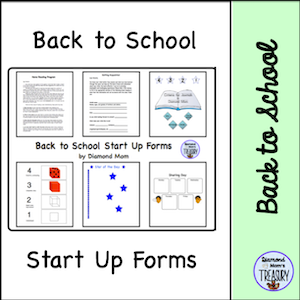










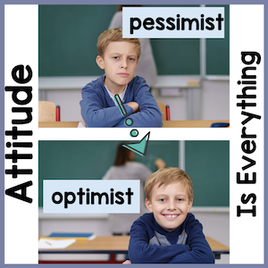


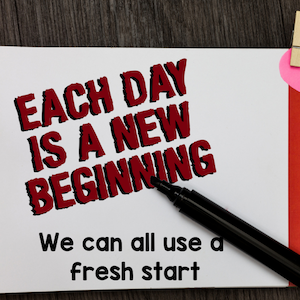




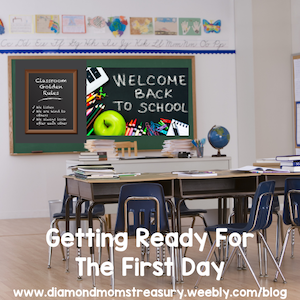









 RSS Feed
RSS Feed